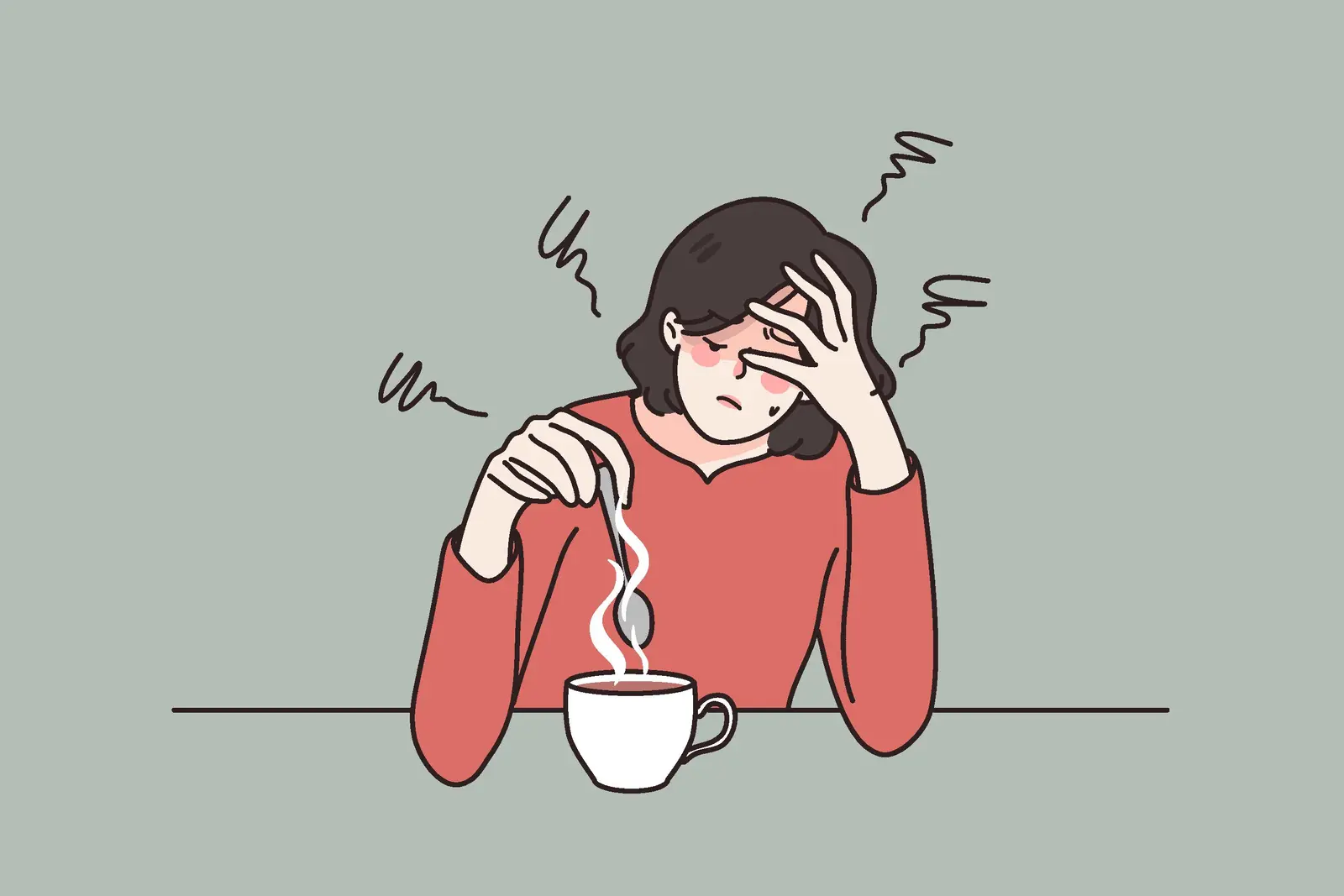Substances
Do Muscle Relaxers Make You Sleepy?
Medically Reviewed By
Written By
Last medically reviewed September 8, 2025
Substances
Medically Reviewed By
Written By
Last medically reviewed September 8, 2025
Muscle relaxers (or relaxants) are commonly prescribed to relieve muscle pain, spasms, and stiffness. Prescription options, such as clonazepam, Valium, and Flexeril, work by slowing overactivity in the central nervous system, thereby helping to control involuntary muscle impulses. While effective, these medications can also cause side effects, with drowsiness being among the most common.
In this article, you’ll discover why muscle relaxers can cause drowsiness, when it might be a concern, and what to do if it starts affecting your daily life.
Muscle relaxers work by depressing the central nervous system (CNS), which controls many bodily functions, including brain and muscle activity. Because these medications slow down CNS activity, they can induce drowsiness.
For patients using muscle relaxers to relieve pain, drowsiness may be an unwanted side effect. However, individuals who abuse these drugs may welcome the sedative effect as a way to escape physical or psychological pain or to cope with stress or depressive episodes.
There are two categories of muscle relaxants — central muscle relaxants and direct-acting muscle relaxants — and not all of them result in drowsiness.
Central muscle relaxants act on the central nervous system rather than directly on the muscles. According to ScienceDirect, these medications reduce the output of nerve impulses to voluntary muscles, making them effective for treating muscle spasms, acute muscle pain, and musculoskeletal conditions.
One commonly prescribed central muscle relaxant, Flexeril (cyclobenzaprine), can cause drowsiness within 30 minutes of administration. This effect can last between 6 and 8 hours, which is why this medication is typically prescribed for short-term use, usually less than three weeks. Cyclobenzaprine has a half-life of approximately 18 hours. So, it may take up to four days to be fully eliminated from the body, though the feeling of sleepiness usually subsides within a few hours.
Despite the sedative properties of Flexeril, only about 39 percent of users experience drowsiness. For this reason, doctors often recommend taking Flexeril close to bedtime if you must participate in daily activities, including operating heavy machinery.
Direct-acting muscle relaxants work by interfering with neurotransmitters responsible for triggering muscle contractions. Medications in this category include dantrolene. Because of the way they are administered, these drugs are less likely to cause drowsiness.
Oral central muscle relaxants act directly on the CNS, leading to sedation. Direct-acting muscle relaxants are often injected and bypass the CNS, resulting in lower instances of sleepiness.
Because skeletal muscle relaxers act on the central nervous system, these drugs are more likely to cause drowsiness. Certain factors can increase the likelihood of experiencing daytime fatigue or excessive sedation, including:
Misusing CNS depressants like muscle relaxants can also lead to tolerance, dependency, and even overdose. Muscle relaxant toxicity can be fatal if it excessively suppresses the central nervous system.
Signs of a muscle relaxant overdose include:
If you suspect someone has overdosed on a muscle relaxant, or if a muscle relaxant was involved in a polysubstance overdose, seek medical attention immediately.
It is common for muscle relaxers to cause drowsiness within minutes to hours after taking them. This effect is generally expected throughout the course of treatment. However, seek emergency medical care immediately if you experience any of the following:
If daytime sleepiness is a concern, talk to your physician. They may adjust your dosing schedule so you take the medication before bedtime rather than during the day. Alternatively, they may prescribe a different medication to manage your pain that doesn’t have drowsiness as a side effect.

Yes, drowsiness can be a sign of muscle relaxer abuse. Like with other central nervous system depressants, misusing these medications can cause excessive sleepiness or “nodding off” at inappropriate times, such as while driving, working, or during conversations. However, because drowsiness is also a common side effect when muscle relaxers are used correctly, drowsiness alone is not a reliable indicator of dependency.
Other signs can provide clearer evidence of CNS depressant abuse. These may include:
Individuals exhibiting these behaviors may have a substance use disorder. If these signs are accompanied by a preoccupation with obtaining or using muscle relaxers, spending significant time managing the effects, and experiencing withdrawal when stopping, the person may be experiencing a more severe form of substance use disorder: addiction.
Dependence on muscle relaxers is a serious condition that requires professional treatment and intervention. If you believe you may be abusing or misusing muscle relaxers, share your concern with a trusted loved one and contact Southeast Addiction Center.
Together, we will create an individualized, comprehensive treatment program that addresses the root causes of your addiction and provides a plan to help you achieve lasting recovery.
Our team is available 24/7 to answer questions about coverage, services, and our fully accredited facility. Contact us today — we are here to help.
Yes, drowsiness is a common side effect of taking oral muscle relaxers.
If you experience additional serious side effects, such as respiratory depression, a slowed heart rate, or trouble speaking, these are adverse side effects. Contact emergency services immediately.
Yes. Since sleepiness can be a side effect, whether from normal use or excessive doses, it’s best to stick to your prescribed dose. Taking more can lead to sedation, which might be mistaken for a normal side effect.
There are many FDA-approved muscle relaxers. Some of the most commonly prescribed ones include Soma (carisoprodol), baclofen, methocarbamol, metaxalone, Zanaflex (tizanidine), and diazepam (Valium). These medications may be helpful to individuals with chronic pain or acute pain that over-the-counter drugs like acetaminophen won’t help.
[1] Osmosis. (n.d). CNS Depressant & Skeletal Muscle Relaxant Therapy. Retrieved from https://www.osmosis.org/learn/CNS_Depressant_%26_Skeletal_Muscle_Relaxant_Therapy on 2025 Sep 9.
[2] Texas Tech University. (2025 Mar 7). RISE Blog | Medication or Misuse? The Difference Between Prescription Drug Use and Abuse. Retrieved from https://www.depts.ttu.edu/rise/Blog/prescriptiondrugs.php on 2025 Sep 9.
[3] Science Direct. Central Muscle Relaxant. (n.d.). Retrieved from https://www.sciencedirect.com/topics/pharmacology-toxicology-and-pharmaceutical-science/central-muscle-relaxant on 2025 Sep 9.
[4] VeryWell Health. (2025 Jun 7). How Long Does Flexeril Make You Sleepy? Retrieved from https://www.verywellhealth.com/how-long-does-cyclobenzaprine-make-you-sleepy-8364260 on 2025 Sep 9.
[5] StatPearls. (2025 May 3). Elimination Half-Life of Drugs. Retrieved from https://www.ncbi.nlm.nih.gov/books/NBK554498/ on 2025 Sep 9.
[6] StatPearls. (2023 Apr 3). Dantrolene. Retrieved from https://www.ncbi.nlm.nih.gov/books/NBK535398/ on 2025 Sep 9.
[7] National Institute on Drug Abuse. (2016 Oct). What Classes Of Prescription Drugs Are Commonly Misused? Retrieved from https://nida.nih.gov/publications/research-reports/misuse-prescription-drugs/what-classes-prescription-drugs-are-commonly-misused on 2025 Sep 9.
[8] Alcohol and Drug Use Foundation. Depressants. (2025 Jun 6). Retrieved from https://adf.org.au/drug-facts/depressants/ on 2025 Sep 9.
[9] U.S. DEA. (2025 Sep). Carisprodol. Retrieved from https://www.deadiversion.usdoj.gov/drug_chem_info/carisoprodol/carisoprodol.pdf on 2025 Sep 9.
[10] Kenosha County. (n.d.). Recognizing the Warning Signs of Substance Abuse. Retrieved from https://www.kenoshacountywi.gov/2305/Recognizing-the-Warning-Signs-of-Substan on 2025 Sep 9.
[11] American Psychiatric Association. (2024 Apr). What is a Substance Use Disorder? Retrieved from https://www.psychiatry.org/patients-families/addiction-substance-use-disorders/what-is-a-substance-use-disorder on 2025 Sep 9.
[12] Wyoming Government. (n.d.). Substance Use Disorder As Defined By NIDA and SAMHSA. Retrieved from https://wyoleg.gov/InterimCommittee/2020/10-20201105Handoutfor6JtMHSACraig11.4.20.pdf on 2025 Sep 9.






